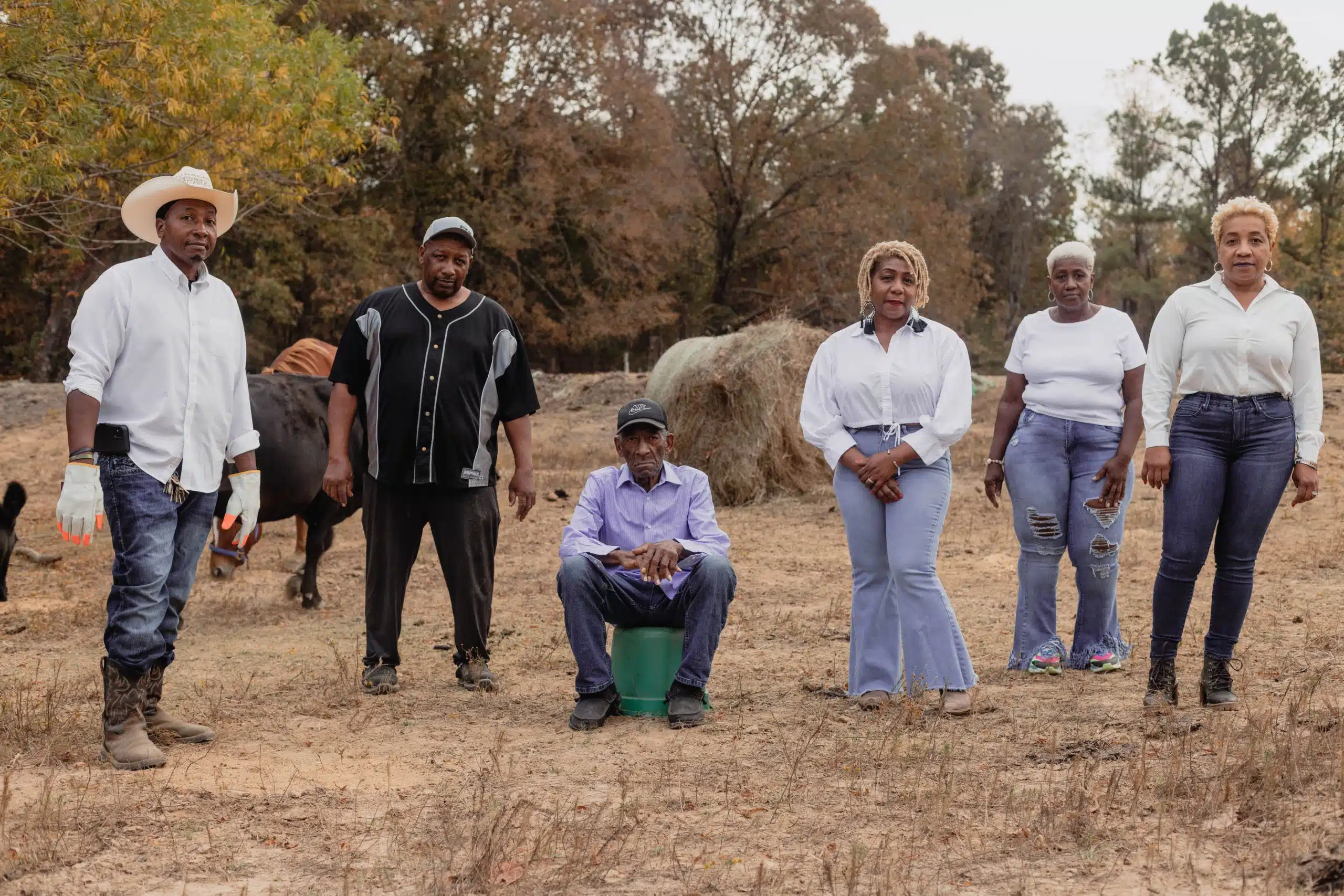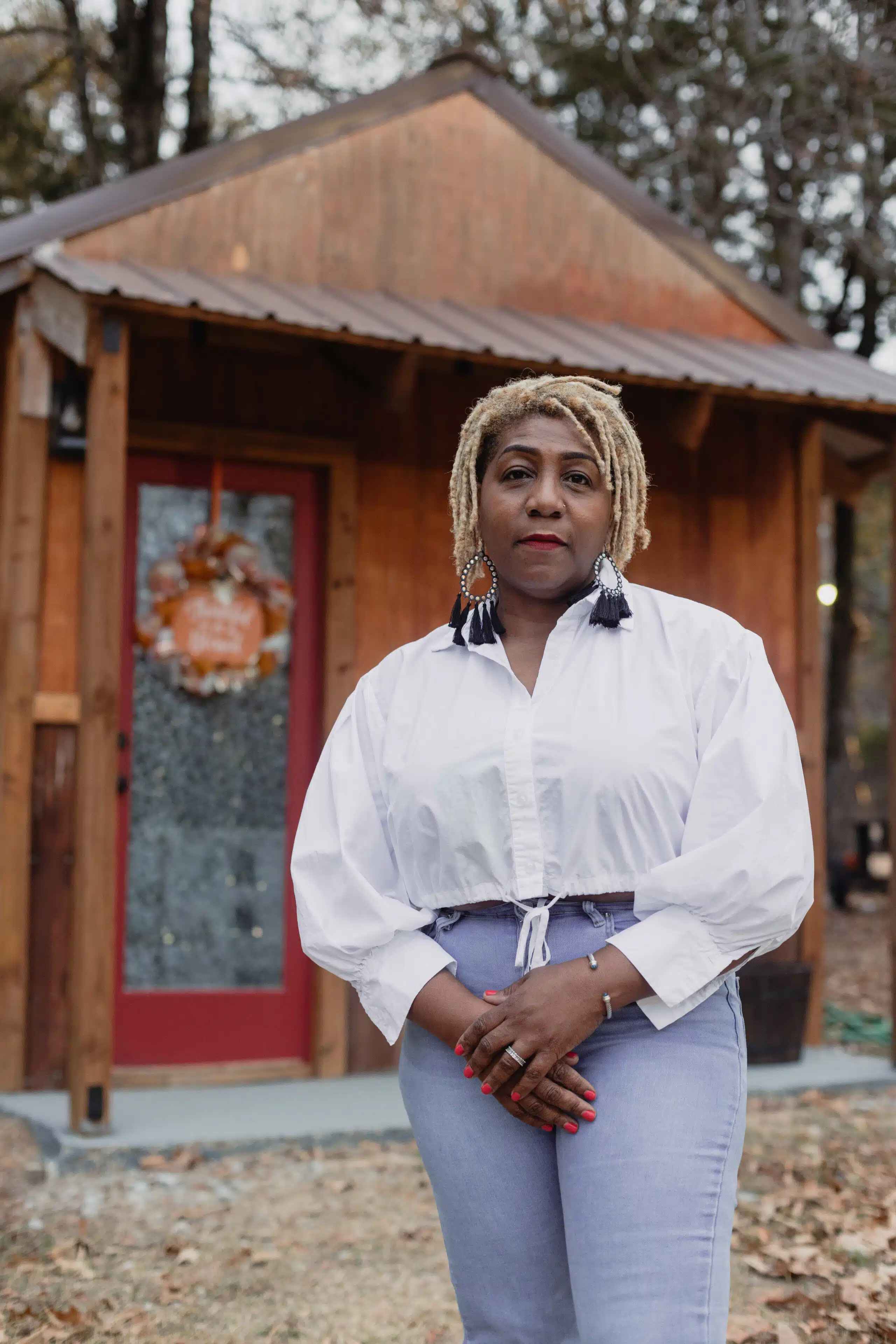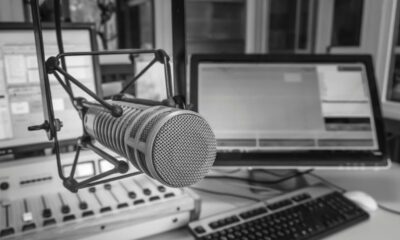Mississippi Today
Farm conservation programs offer solutions to climate threats, but are vastly underfunded

When the U.S. Department of Agriculture denied Albert Johnson Sr.’s application for a farm loan in the mid-1980s, he went to a private lender who made him list as collateral all 20 of his cattle and his one bull.
“I stood a chance of losing my livestock,” Johnson wrote in a 1999 affidavit to receive part of a $2.3 billion federal settlement between Black farmers and the USDA.
Johnson, 81, who lives near Lexington, Mississippi, was among thousands deemed to not qualify for settlement money, his family said.
Against all odds, their family farm has persisted, part of the just 1% of remaining Black-owned farms in the United States. In an age of mechanized and industrialized agriculture, they face many challenges in operating a sustainable cattle farm — and there’s federal assistance to help with that.
But last month, Johnson’s children learned their application for federal conservation funding was turned down. They had sought up to $30,000 to dig a well and add cross fencing that would have allowed them to do rotational cattle grazing, which protects the soil from erosion.

“It was like ‘here again, another generation’,” said Charlene Gatson, 50, Johnson’s daughter. ”It was like history repeating itself.”
The Biden administration has called such USDA conservation programs a “linchpin” in the nation’s climate strategy, yet they remain vastly underfunded.
Just three out of 10 landowner applications for the two main programs, the Environmental Quality and Incentives Program and the Conservation Stewardship Program, were approved between 2018 and 2022. The majority of landowners are told to try again without advice on how to improve their odds.
“These are farmers and landowners who want to do conservation on their farm. They want to do something we all seem to support — which is conserving natural resources,” said Jonathan Coppess, an associate professor and director of the Gardner Agriculture Policy Program at the University of Illinois.
Farmers want to improve the environment. Hundreds of thousands of them are applying. “And then you don’t get funding for no other reason than that funding is not sufficient in the program. The level of frustration and anger is pretty real,” said Coppess.
Although the Inflation Reduction Act provided $18 billion more for these in-demand conservation programs, some members of Congress want to claw back that money to pay for the 2023 Farm Bill.
High demand, not enough money
The flagship program of the USDA’s Natural Resources Conservation Service is the one the Johnsons applied for —the Environmental Quality Incentives Program — which reimburses agricultural and forestry producers 50% to 90% of the cost for fixing specific conservation problems and delivering environmental benefits, such as improving water or air quality, enriching soil or protecting against drought.
Between fiscal 2018 and fiscal 2022, the Resource Conservation Service allocated $6.2 billion for the program, but that only covered 31% of the nearly 600,000 applications submitted during that five-year period, according to Investigate Midwest’s analysis of application and funding data the USDA provided The Gazette as part of a Freedom of Information Act request.
The Conservation Stewardship Program, created in the 2008 Farm Bill, provides annual payments to producers willing to improve conservation over a five-year period. The Resources Conservation Service awarded $2.1 billion from fiscal 2018 through fiscal 2022, which covered just 28% of applications nationwide.
“EQIP and CSP are working lands programs so they are doing conservation on land that is continuing to produce crops,” Coppess said.
Programs face criticism, but remain the main federally supported solution
Modern agriculture takes a toll on soil and water. Programs like these are intended to mitigate the damage. A 2020 National Resource Conservation Service report showed the Environmental Quality Incentives Program’s conservation from 2014-2018 increased soil and carbon retained in farm fields as well as provided wildlife habitat.
“Practices funded through EQIP to address forest health and watershed protection on non-industrial private forest land also sequester carbon,” the report found.
The most popular requests for the two programs’ funds vary by state. In Iowa and Wisconsin, where corn and soybeans grow, cover crops were by far the most-funded environmental incentives program practice from 2017 through 2020, according to an analysis from the Environmental Working Group. But in Mississippi, with a more diverse farming mix including poultry, livestock and cotton, the environmental incentives program’s practices that got the most funding were for fencing, grade stabilization structures and irrigation.
Some environmental groups have criticized that program for earmarking 50% of all funding for livestock practices, Coppess said. Although the U.S. has the world’s largest fed-cattle industry and livestock make up half or more of some states’ ag exports, what if your state isn’t big into pork or beef? Does that mean you get less money? There also are fears it will encourage more large-scale animal production, which can produce large amounts of waste that threatens water sources.
The National Resource Conservation Service allocates money to each state for the environmental quality incentive and conservation stewardship programs contracts. States then distribute the cash to counties or manage the funds at the state level.
To decide how to spend the limited pot of money for conservation programming, local Resource Conservation Service officials rank applications on a handful of factors, including how much the practice or activity costs, the magnitude of environmental benefits that could be achieved and how well the practice or activity proposed fits with “national priority resource concerns,” the service reported.
“The ranking process was developed to try to be fair to everyone,” said Scott Cagle, assistant state conservationist for partnerships with the Iowa National Resource Conservation Service. But there are winners and losers and some producers drop out if they don’t get funded right away, Cagle said.
“We run into instances where producers signed up, the process takes too long sometimes and they give up,” he said.
Outreach to Black landowners, others who are underserved
The Johnson family is raising cattle on about 15 of the 200 acres they own near Lexington, Mississippi. During long spells without rain, the grass dries up and the Johnsons have to buy hay.

Then the pond dries up and they have to use a hose from the house to water the cows, Gatson said.
If they got Environmental Quality Incentive Program money, they would install cross fencing that would allow them to move cattle around, so plants can regrow between grazings and better protect the soil from erosion. A new well to provide reliable water would cost as much as $20,000.
“We need funding just for the cows to survive,” Gatson said.
The Mississippi National Resource Conservation Service suggested in a Oct. 6 denial letter that the Johnsons “defer” their program application, which puts it back in the pile for the next funding cycle. But Gatson wants to know why their project didn’t rank higher so she can improve the application for next time.
“Could you tell us why some were funded and some were not?” she asked.
National Resource Conservation Service offices across the country have been trying to staff up to provide faster distribution of funds and more help for applicants. A workload analysis for Mississippi’s service says they need another 55 to 60 employees to meet the need there.
Mississippi conservation officials have been expanding outreach to small producers, including those who haven’t traditionally gotten funding.
“If you look at Mississippi, it has the highest percentage of Black landowners in the nation and that’s around 10%,” said James Cummins, executive director of Wildlife Mississippi, a nonprofit that works toward habitat restoration and conservation policy in the state. “We want to see a percentage (of new conservation money) going to help historically-underserved producers to help them maintain their family’s land and improve their natural resources.”
Mississippi, a state where agriculture is the No. 1 industry, submitted a whopping 10% of all Environmental Quality Incentive Program and Conservation Stewardship Program applications from fiscal 2018 through fiscal 2022. But despite having the highest number of applications in both programs, only 14% of its stewardship program applications were approved, making it the state with the lowest approval rate relative to its application volume. In the case of environmental quality program, the state had an approval rate of just 21%.
Noemy Serrano is assistant policy director at Michael Fields Agricultural Institute who also works for Wisconsin Women in Conservation, which helps women farmers figure out conservation programs like National Resource Conservation Service. She said recently a farmer who’d received Environmental Quality Incentive Program funding before was confused about whether she could apply again.
“That speaks to the details,” Serrano said. “Even folks that have already applied and been funded through the program sometimes don’t fully understand how it works and how to move forward with it.”
According to USDA data, Wisconsin funded 37% of the environmental quality incentives applications and 35% of stewardship program applications received in fiscal year 2022.
In a perfect world, the National Resource Conservation Service would work with each farmer to make their application more likely to be funded, advocates said.
But because the service staff are so busy, “instead of going out and adding different projects to these applications…they’re not adding that on, because it means more work,” said Sara George, who grows specialty crops near Pepin, Wisconsin.
Cash infusion in jeopardy
Conservation advocates hope a federal cash infusion will reduce the backlog of unfunded projects.
The Inflation Reduction Act, signed by President Biden in August 2022, provides $8.45 billion more for the environmental quality program and $3.25 billion more for the stewardship program starting this year and building through fiscal 2026. This could potentially fund hundreds of thousands more applications. There’s another $300 million to quantify greenhouse gas sequestration.
“We know nationwide that IRA funds will increase” in 2024, said Jamie Alderks, assistant state conservationist for financial assistance programs with the Illinois National Resource Conservation Service. “IRA funds will assist in meeting some of the unmet demand.”
But Republicans in the U.S. House want to repurpose that the Inflation Reduction Act conservation money to help pay for the Farm Bill, which expired in October without being renewed. House Agriculture Chairman Glenn Thompson suggested cutting $50 billion, mostly to climate change and public nutrition programs, to pay for other agriculture programs, such as crop insurance, The Hill reported.
In an Oct. 23 letter published by Politico, 24 Democrats on the House Agriculture Committee pushed back against the idea: “Moving the IRA funds from conservation would be denying farmers the support they need and want.”
Brittney J. Miller of the Gazette contributed to this story, which is a product of the Mississippi River Basin Ag & Water Desk, an independent reporting network based at the University of Missouri in partnership with Report for America, with major funding from the Walton Family Foundation.
This article first appeared on Mississippi Today and is republished here under a Creative Commons license.
Mississippi Today
Brain drain: Mother understands her daughters’ decisions to leave Mississippi
Editor’s note: This Mississippi Today Ideas essay is published as part of our Brain Drain project, which seeks answers to Mississippi’s brain drain problem. To read more about the project, click here.
Back when I was a kid in 1988, my mama and I had an argument about what I wanted to major in at college.
I had dreamed of being a journalist since the age of 8. To me, that meant that I was going to Ole Miss, which had the journalism department.
My mama said I could only go away from home to Ole Miss if I was going to major in law.
So I settled on going to Mississippi State University just down the road and majoring in communication. She told me I should major in engineering since that’s what State was known for.
I said, “That’s even dumber than me going to law school. I hate math.”
“Well, you could at least try,” she said.
I said no. Then she told me I was wasting my education and turned her back on me.
I get it. She knew and I knew that I couldn’t stay in Choctaw County where I was raised and earn a living with that degree. I would have to go somewhere else — probably to the Jackson metro area and work for Gannett or the Associated Press. Or to Memphis. Or Biloxi. Or even New Orleans. She never really forgave me for moving to the Jackson metro, working in my field and raising her grandchildren so far from her.
After a while, I got used to the pace of life around here. I knew I probably wouldn’t ever move anywhere else because I noticed that people who left Mississippi often came back, whether due to family obligations or a realization that “somewhere else” wasn’t quite all it was cracked up to be.
I also noticed that a lot of people played up how they were from Mississippi while making a very good living being someplace else. I decided I wanted to prove you could be from Mississippi, live in Mississippi, work in Mississippi and make something of yourself without leaving Mississippi.
But I noticed something else over the years, too. Most of the kids in Brandon dreamed of going off from home to cities like Atlanta, Nashville, Dallas, DC, New York or Orlando. They didn’t seem to have reasons — just a desire to get away from the state as fast as they could.
Then my three daughters and I started having conversations about what they wanted to major in when they went to college. My oldest wanted to be a chef. My middle one was undecided between chemical engineering and landscape architecture. And my youngest was fascinated with roads and bridges.
I was all too aware of what had happened in the job markets in Mississippi since I had come up. Companies closed operations in a globalized economy and fled to cheaper labor markets. The advent of the internet meant employers could hire from all over the world. Longtime business leaders retired and sold out to big corporations that reduced investments in local communities that had supported those businesses for decades and then complained that those towns didn’t offer enough amenities for their employees to want to relocate there.
But the reality really set in when my chef daughter chose her first internship — in historic Williamsburg, Virginia.
I would never have dreamed of driving that far from home to try out a place to work when I was her age. Then after her senior year, she interned at Walt Disney World and got hired full-time before the internship was over. She was off to live in Orlando where now with her husband and young son she’s creating community and loves going to work every day with a pretty enviable benefits package, too, a thing unheard of in the culinary world in Mississippi.
My middle one finally settled on chemical engineering and was picked for a co-op job in her first semester at age 18 at a company in Georgia. When she graduated four years later, we packed her off to Indiana for a research and development job, and she now lives in New Hampshire with her husband, making six figures a year at 26 years old and looking forward to partaking in the cultural offerings in New York City when she can.
The youngest is currently in college for civil engineering, and I’m bracing myself for the inevitable. She doesn’t want to work for state government, so she’s likely going out of state as well. Her comment about coming back to Jackson metro was the most damning of all. “There’s nothing to do here,” she says.
A lot of people ask me questions: How often do you see your daughters? How can you stand being so far from your grandson? Don’t they at least come home for Christmas?
The answer to all of those questions is that we do the best we can. We text, we message on Facebook, we talk on the phone at least once a week, every Sunday. We arrange visits; sometimes it’s us driving to them while other times they drive to us.
I can’t imagine making my children as miserable as my mom made me over my life choices. We are flexible, understanding, and very, very proud of our daughters, who are grappling with enough in their lives without us loading them down with guilt over when they are coming home.
The calculus may change in the future. We may have declines in health and need to move closer to one of our children if we need assistance. Or we may need to be in assisted living care here in Mississippi where such care may be marginally cheaper than wherever our girls land.
But I don’t wish our girls had settled for life in Mississippi.
What I wish is that Mississippi could find a way to live up to its potential — to be a place more worthy of my daughters’ loyalty, affections and investment in themselves.
Maybe it will be someday. I hope so, for all of our sakes.
Julie Liddell Whitehead lives and writes from Mississippi. An award-winning freelance writer, Julie covered disasters from 9/11 to Hurricane Katrina throughout her career. Her first book is “Hurricane Baby: Stories,” published by Madville Publishing. She writes on mental health, mental health education and mental health advocacy. She has a bachelor’s degree in communication, with a journalism emphasis, and a master’s degree in English, both from Mississippi State University. In 2021, she completed her MFA from Mississippi University for Women.
This article first appeared on Mississippi Today and is republished here under a Creative Commons Attribution-NoDerivatives 4.0 International License.
The post Brain drain: Mother understands her daughters' decisions to leave Mississippi appeared first on mississippitoday.org
Note: The following A.I. based commentary is not part of the original article, reproduced above, but is offered in the hopes that it will promote greater media literacy and critical thinking, by making any potential bias more visible to the reader –Staff Editor.
Political Bias Rating: Center-Left
This essay reflects a Center-Left perspective by focusing on social and economic challenges faced by Mississippi, such as brain drain, job market changes, and community decline. The tone is empathetic and advocates for investment in local opportunities and amenities to retain talent, aligning with progressive concerns about economic inequality and regional development. However, it remains largely personal and reflective rather than explicitly ideological or partisan. The article critiques systemic economic shifts without advancing a polarized political agenda, emphasizing hope for future improvement and a more supportive environment for young professionals.
Mississippi Today
After 30 years in prison, Mississippi woman dies from cancer she says was preventable
Behind Bars, Beyond Care:
A Mississippi Today investigation into suffering, secrecy and the business of prison health care
Susie Balfour, diagnosed with terminal breast cancer two weeks before her release from prison, has died from the disease she alleged past and present prison health care providers failed to catch until it was too late.
The 64-year-old left the Central Mississippi Correctional Facility in December 2021 after more than 30 years of incarceration. She died on Friday, a representative for her family confirmed.
Balfour is survived by family members and friends. News of her passing has led to an outpouring of condolences of support shared online from community members, including some she met in prison.
Instead of getting the chance to rebuild her life, Balfour was released with a death sentence, said Pauline Rogers, executive director of the RECH Foundation.
“Susie didn’t just survive prison, she came out fighting,” Rogers said in a statement. “She spent her final years demanding justice, not just for herself, but for the women still inside. She knew her time was limited, but her courage was limitless.”
Last year, Balfour filed a federal lawsuit against three private medical contractors for the prison system, alleging medical neglect. The lawsuit highlighted how she and other incarcerated women came into contact with raw industrial chemicals during cleaning duty. Some of the chemicals have been linked to an increased risk of cancer in some studies.
The companies contracted to provide health care to prisoners at the facility over the course of Balfour’s sentence — Wexford Health Sources, Centurion Health and VitalCore, the current medical provider — delayed or failed to schedule follow-up cancer screenings for Balfour even though they had been recommended by prison physicians, the lawsuit says.
“I just want everybody to be held accountable,” Balfour said of her lawsuit. “ … and I just want justice for myself and other ladies and men in there who are dealing with the same situation I am dealing with.”
Rep. Becky Currie, who chairs the House Corrections Committee, spoke to Balfour last week, just days before her death. Until the very end, Balfour was focused on ensuring her story would outlive her, that it would drive reforms protecting others from suffering the same fate, Currie said.
“She wanted to talk to me on her deathbed. She could hardly speak, but she wanted to make sure nobody goes through what she went through,” Currie said. “I told her she would be in a better place soon, and I told her I would do my best to make sure nobody else goes through this.”
During Mississippi’s 2025 legislative session, Balfour’s story inspired Rep. Justis Gibbs, a Democrat from Jackson, to introduce legislation requiring state prisons to provide inmates on work assignments with protective gear.
Gibbs said over 10 other Mississippi inmates have come down with cancer or become seriously ill after they were exposed to chemicals while on work assignments. In a statement on Monday, Gibbs said the bill was a critical step toward showing that Mississippi does not tolerate human rights abuses.
“It is sad to hear of multiple incarcerated individuals passing away this summer due to continued exposure of harsh chemicals,” Gibbs said. “We worked very hard last session to get this bill past the finish line. I am appreciative of Speaker Jason White and the House Corrections Committee for understanding how vital this bill is and passing it out of committee. Every one of my house colleagues voted yes. We cannot allow politics between chambers on unrelated matters to stop the passage of good common-sense legislation.”
The bill passed the House in a bipartisan vote before dying in the Senate. Currie told Mississippi Today on Monday that she plans on marshalling the bill through the House again next session.
Currie, a Republican from Brookhaven, said Balfour’s case shows that prison medical contractors don’t have strong enough incentives to offer preventive care or treat illnesses like cancer.
In response to an ongoing Mississippi Today investigation into prison health care and in comments on the House floor, Currie has said prisoners are sometimes denied life saving treatments. A high-ranking former corrections official also came forward and told the news outlet that Mississippi’s prison system is rife with medical neglect and mismanagement.
Mississippi Today also obtained text messages between current and former corrections department officials showing that the same year the state agreed to pay VitalCore $100 million in taxpayer funds to provide healthcare to people incarcerated in Mississippi prisons, a top official at the Department remarked that the company “sucks.”
Balfour was first convicted of murdering a police officer during a robbery in north Mississippi, and she was sentenced to death. The Mississippi Supreme Court reversed the conviction in 1992, finding that her constitutional rights were violated in trial. She reached a plea agreement for a lesser charge, her attorney said.
As of Monday, the lawsuit remains active, according to court records. Late last year Balfour’s attorneys asked for her to be able to give a deposition with the intent of preserving her testimony. She was scheduled to give one in Southaven in March.
Rogers said Balfour’s death is a tragic reminder of systemic failures in the prison system where routine medical care is denied, their labor is exploited and too many who are released die from conditions that went untreated while they were in state custody.
Her legacy is one RECH Foundation will honor by continuing to fight for justice, dignity and systemic reform, said Rogers, who was formerly incarcerated herself.
This article first appeared on Mississippi Today and is republished here under a Creative Commons Attribution-NoDerivatives 4.0 International License.
The post After 30 years in prison, Mississippi woman dies from cancer she says was preventable appeared first on mississippitoday.org
Note: The following A.I. based commentary is not part of the original article, reproduced above, but is offered in the hopes that it will promote greater media literacy and critical thinking, by making any potential bias more visible to the reader –Staff Editor.
Political Bias Rating: Center-Left
This article presents a critical view of the Mississippi prison health care system, highlighting systemic failures and medical neglect that led to the death of a formerly incarcerated woman. The tone and framing focus on social justice issues, prisoner rights, and the need for government accountability and reform, which align with Center-Left values emphasizing government responsibility for vulnerable populations. While the article is largely investigative and fact-based, its emphasis on advocacy for reform, criticism of privatized prison health contractors, and highlighting bipartisan legislative efforts suggest a Center-Left leaning perspective rather than neutral reporting.
Mississippi Today
FBI concocted a bribery scheme that wasn’t, ex-interim Hinds sheriff says in appeal
Former interim Hinds County sheriff Marshand Crisler is appealing bribery and ammunition charges stemming from his 2021 campaign, arguing that the federal government played on his relationship with a former supporter to entrap him.
Crisler had asked Tonarri Moore, who donated to past campaigns, for a financial contribution for the sheriff’s race. Moore said he would donate if Crisler helped with several requests. Without the previous relationship, Crisler would not have acted, his attorney argues, and Crisler had no reason to believe he was being bribed.
“The government, having concocted a bribery scheme to entrap Crisler, then had to contrive a corresponding quid pro quo to support the scenario with which to entrap him,” attorney John Holliman wrote in a Saturday appellant brief.
Crisler is asking the U.S. 5th Circuit Court of Appeals to reverse his conviction and render its own rulings on both counts.
He was convicted in federal court in November after a three-day trial and sentenced earlier this year to 2 ½ years in prison. Crisler is serving time in FCI Beckley in West Virginia.
The day before Crisler reached out to Moore to ask for support for his campaign for sheriff, Drug and Enforcement Administration agents raided Moore’s home and found guns and drugs. An FBI agent called to the scene looked through Moore’s phone and saw Crisler had called.
According to the appellant brief, the agent asked Moore what Crisler would do if offered money, and if Moore was bribing him. Moore said he wasn’t bribing Crisler, and the agent asked if Moore would do it.
At that time, there weren’t reasonable grounds to start a bribery investigation into Crisler, his attorney argues, nor was there reason to believe he was seeking a bribe.
Moore agreed to become an informant for the FBI, in exchange for the government not prosecuting him for the guns and drugs.
The FBI fitted him with a wire to record Crisler during meetings, which began that day. The meetings included one inside Moore’s night club and a cigarette lounge in Jackson. Agents provided Moore with the $9,500 he gave to Crisler between September and November 2021.
Crisler’s 2023 indictment came as he campaigned again for sheriff and months before the primary election. He remained in the race and lost to the incumbent who he faced in 2021.
At trial, the government argued the exchange of money were attempts to bribe because Moore made several requests of Crisler: to move his cousin to a different part of the Hinds County Detention Center, to get him a job in the sheriff’s office and for Crisler to let Moore know if law enforcement was looking into his activities.
In closing arguments, Assistant U.S. Attorney Charles Kirkham pointed to examples of quid pro quo in recordings, including one where Moore said to Crisler, “You scratch my back, I scratch yours” and Crisler replied “Hello!” in a tone that the government saw as agreement.
The appellant’s brief argues that without Moore’s requests, the government lacked a way to show quid pro quo, a requirement of bribery charge: that Crisler committed or agreed to commit an official act in exchange for funds.
Moore also asked Crisler to give him bullets despite being a convicted felon, which is prohibited under federal law. The brief notes how the government directed Moore to come up with a story for needing the bullets and to ask Crisler to give them to him.
In response, Crisler told Moore he could buy bullets at several sporting goods stores. Moore said they ran out, and eventually Crisler gave him bullets.
Crisler also argues that the government prosecuted routine political behavior. Specifically, accepting campaign donations is not illegal, and can not constitute bribery unless there is an explicit promise to perform or not perform an official act in exchange for money.
“Our political system relies on interactions between citizens and politicians with requests being made for this or that which is within the power of the elected official to do,” the brief states. “This does not constitute a bribery scheme. It is the normal working of our political system.”
This article first appeared on Mississippi Today and is republished here under a Creative Commons Attribution-NoDerivatives 4.0 International License.
The post FBI concocted a bribery scheme that wasn’t, ex-interim Hinds sheriff says in appeal appeared first on mississippitoday.org
Note: The following A.I. based commentary is not part of the original article, reproduced above, but is offered in the hopes that it will promote greater media literacy and critical thinking, by making any potential bias more visible to the reader –Staff Editor.
Political Bias Rating: Center-Right
The article presents the legal appeal of former interim Hinds County sheriff Marshand Crisler with a focus on his argument that the FBI orchestrated an entrapment scheme. The language is largely factual and centers on the defense’s claims and legal standards for bribery, emphasizing normal political behavior versus illegal conduct. While the article reports on the government’s position, it gives significant space to Crisler’s defense and critiques of federal prosecution tactics. This framing, highlighting skepticism toward federal law enforcement and emphasizing the defense perspective, suggests a slight center-right leaning, reflecting a cautious stance on government overreach without overt ideological language.
-
Mississippi Today5 days ago
After 30 years in prison, Mississippi woman dies from cancer she says was preventable
-
News from the South - Georgia News Feed6 days ago
Woman charged after boy in state’s custody dies in hot car
-
News from the South - Florida News Feed5 days ago
Warning for social media shoppers after $22K RV scam
-
News from the South - Texas News Feed7 days ago
Texas VFW holds memorial service for WWII pilot from Georgetown
-
News from the South - North Carolina News Feed3 days ago
Two people unaccounted for in Spring Lake after flash flooding
-
News from the South - Georgia News Feed5 days ago
Georgia lawmakers to return this winter to Capitol chambers refreshed with 19th Century details
-
News from the South - Missouri News Feed7 days ago
Missouri native Chad Marler takes title, wins $100K at major bass tournament
-
News from the South - Alabama News Feed7 days ago
Flood Watch for Alabama: Storms linger overnight, with cooler weather in the forecast


















































